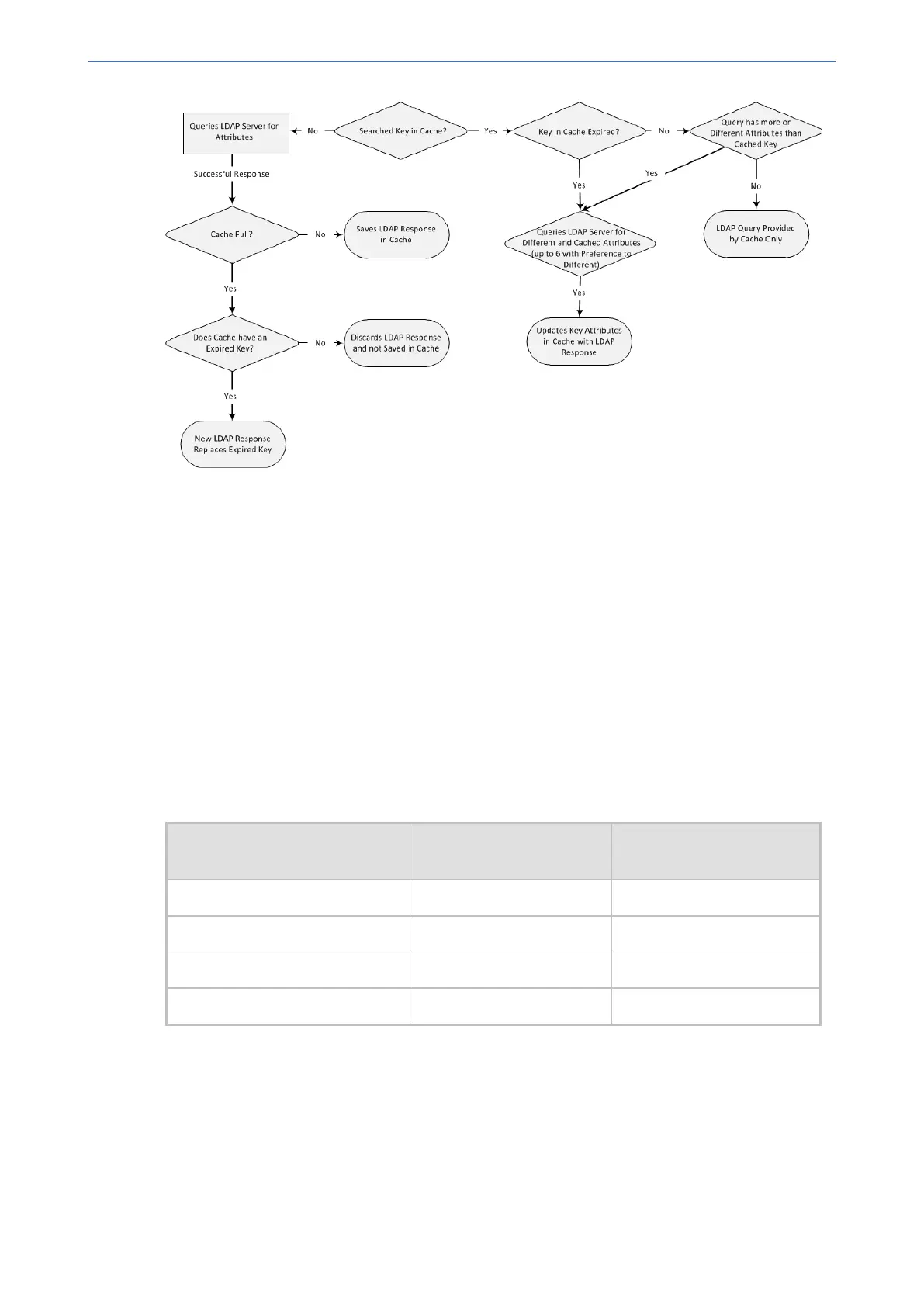CHAPTER16 Services
Mediant 1000 Gateway & E-SBC | User's Manual
If an LDAP query is required for an Attribute of a key that is already cached with that same
Attribute, instead of sending a query to the LDAP server, the device uses the cache. However, if an
LDAP query is required for an Attribute that does not appear for the cached key, the device queries
the LDAP server, and then saves the new Attribute (and response) in the cache for that key.
If the device queries the LDAP server for different Attributes for a cached key, the device also
includes already cached Attributes of the key, while adhering to the maximum number of allowed
saved Attributes (see note below), with preference to the different Attributes. In other words, if the
cached key already contains the maximum Attributes and an LDAP query is required for a different
Attribute, the device sends an LDAP query to the server for the different Attribute and for the five
most recent Attributes already cached with the key. Upon the LDAP response, the new Attribute
replaces the oldest cached Attribute while the values of the other Attributes are refreshed with the
new response.
The following table shows an example of different scenarios of LDAP queries of a cached key
whose cached Attributes include a, b , c , and d, where a is the oldest and d the most recent
Attribute:
Table 16-11:Example of LDAP Query for Cached Attributes
Attributes Requested in New
LDAP Query for Cached Key
Attributes Sent in LDAP
Query to LDAP Server
Attributes Saved in Cache
after LDAP Response
e e, a, b, c, d e, a, b, c, d
e, f e, f, a, b, c, d e, f, a, b, c, d
e, f, g, h,i e, f, g, h, i, d e, f, g, h,i, d
e, f, g, h, i, j e, f, g, h, i, j e, f, g, h, i, j
- 223 -

